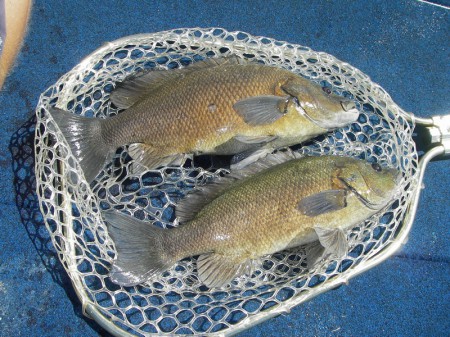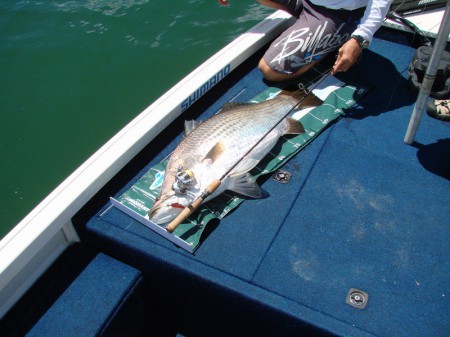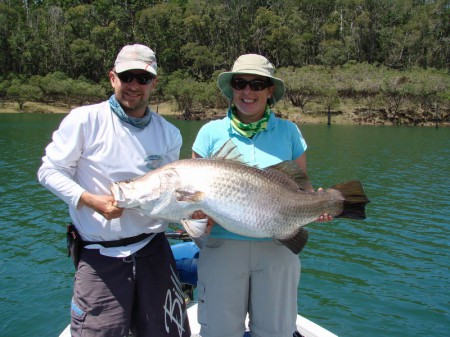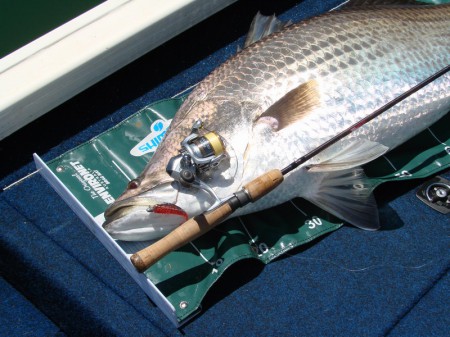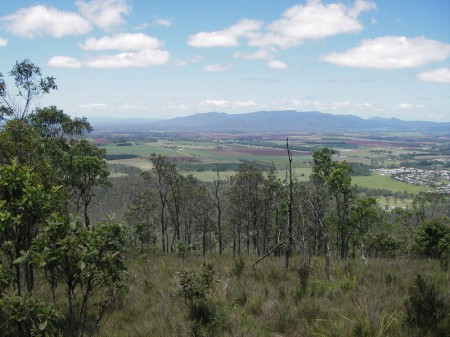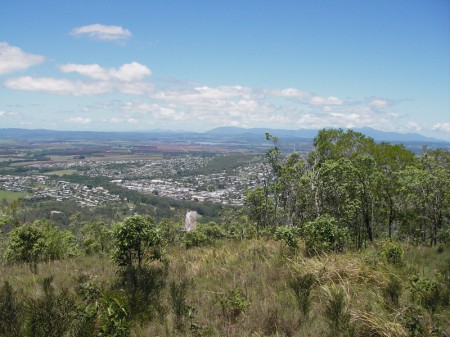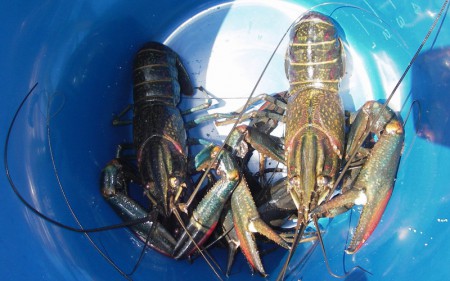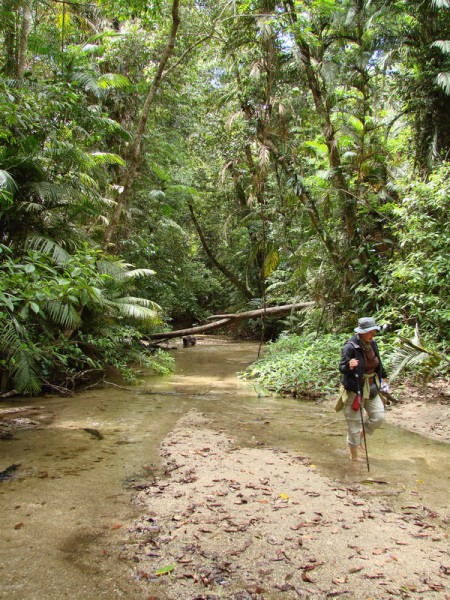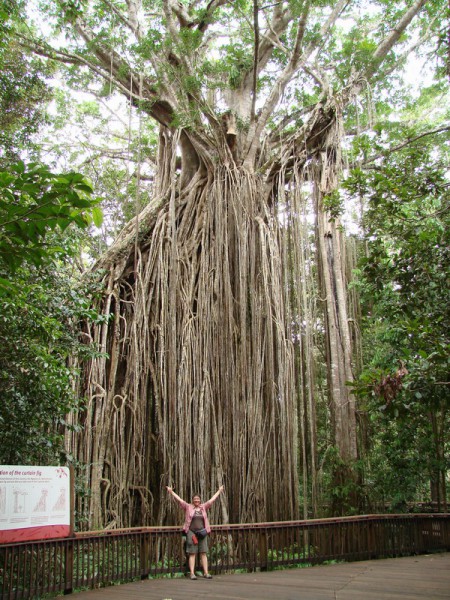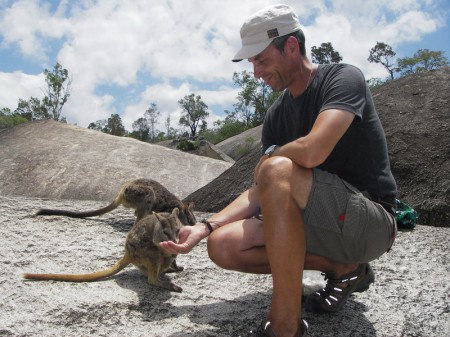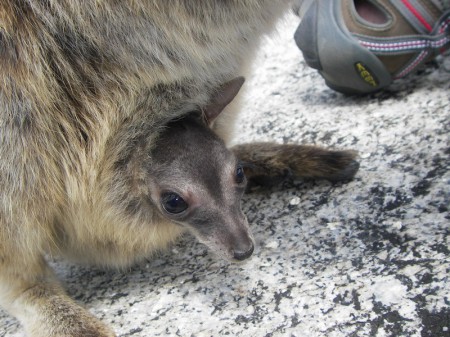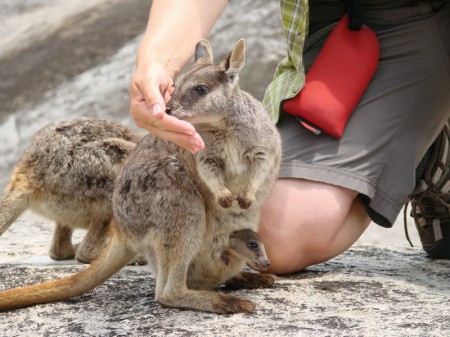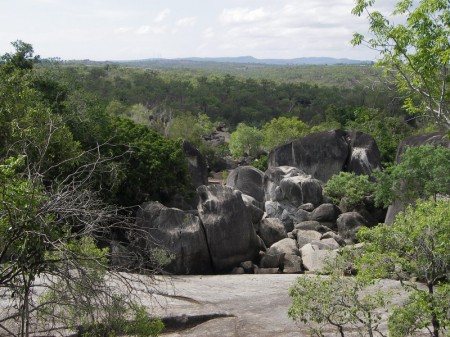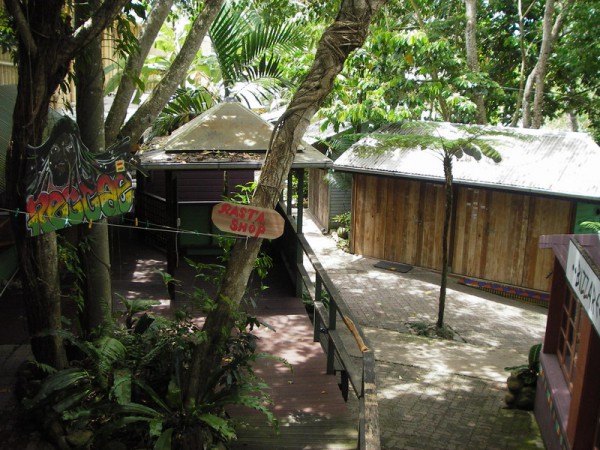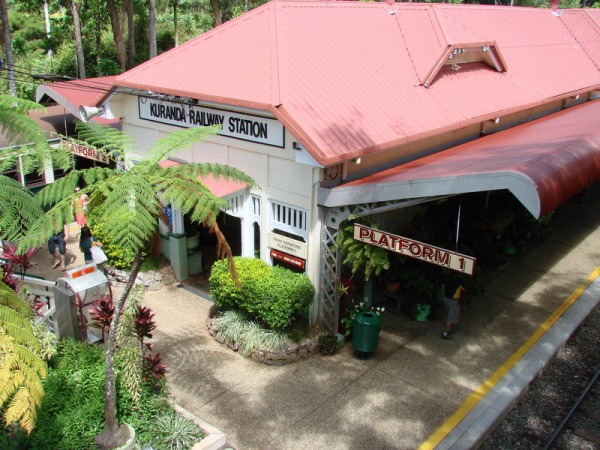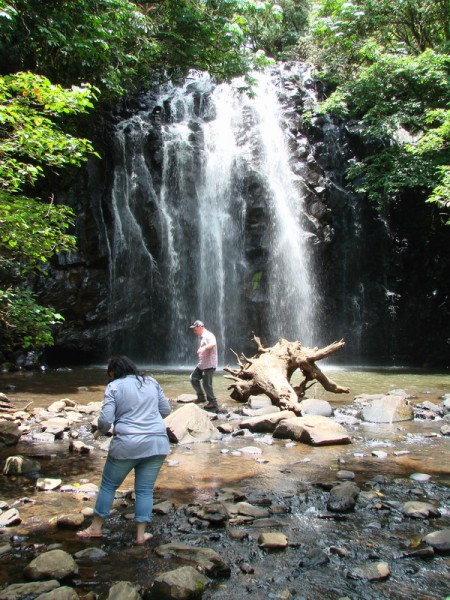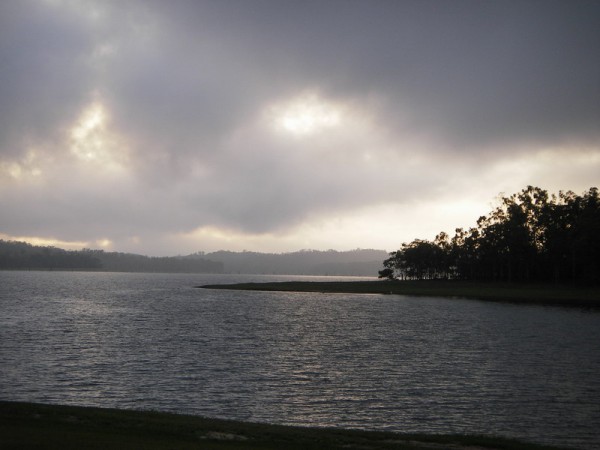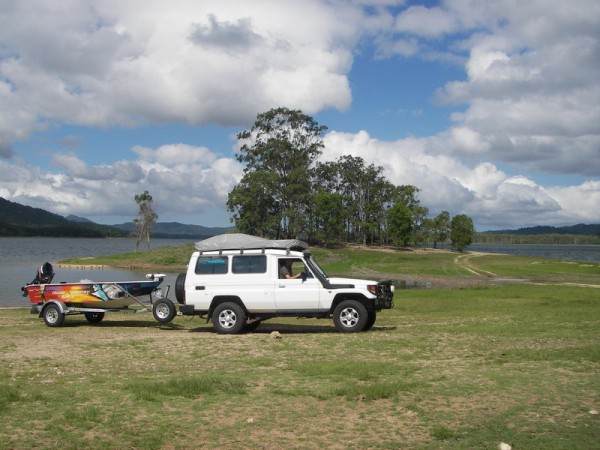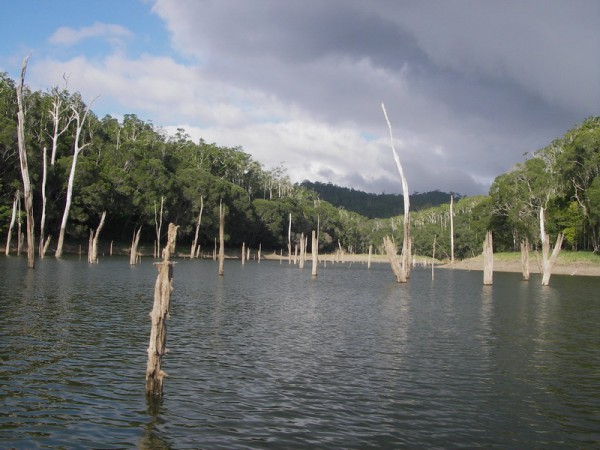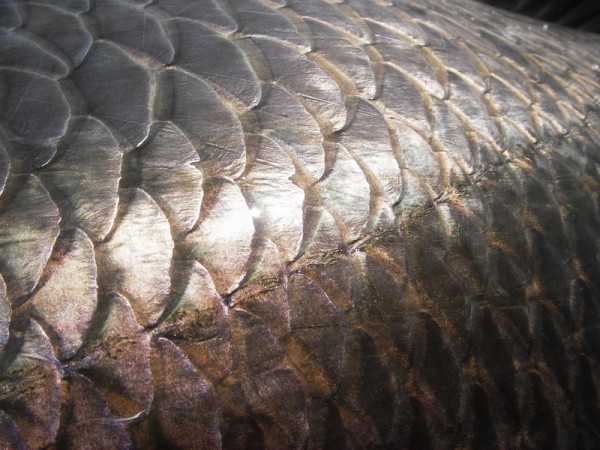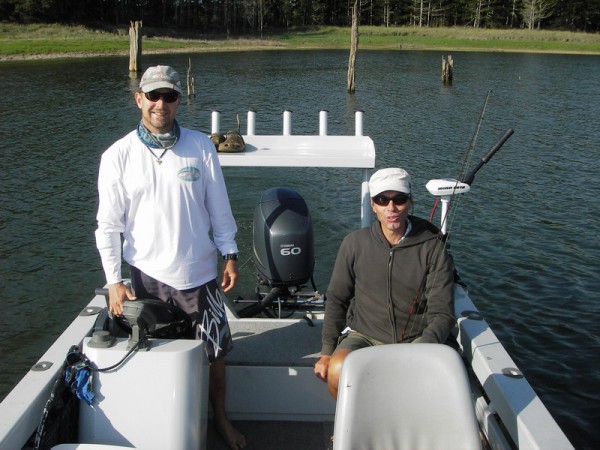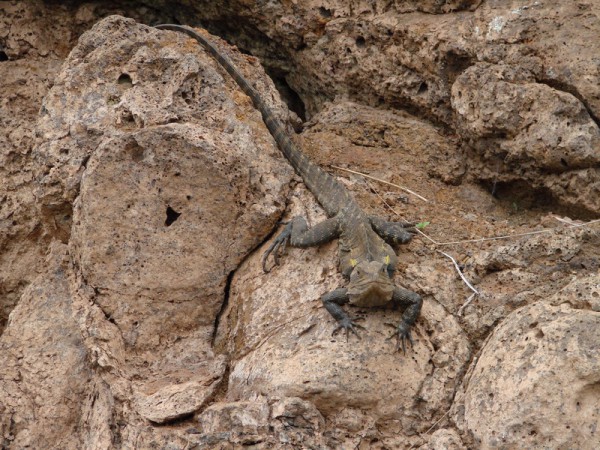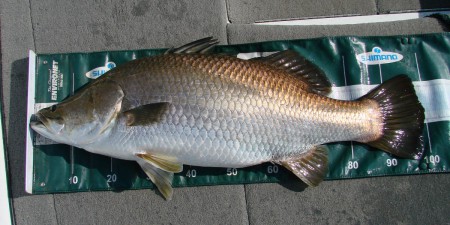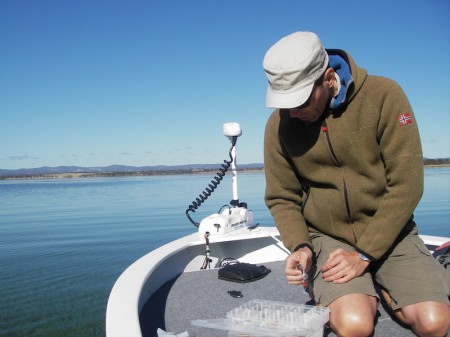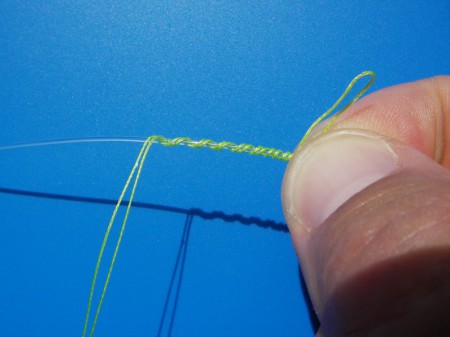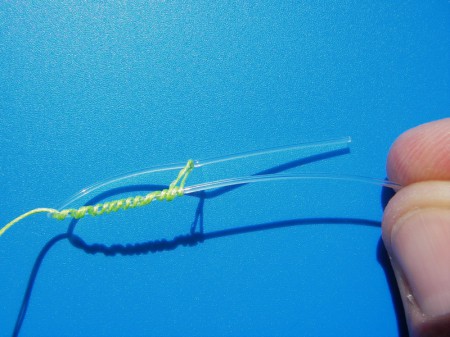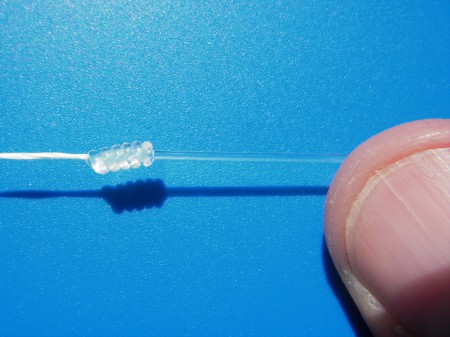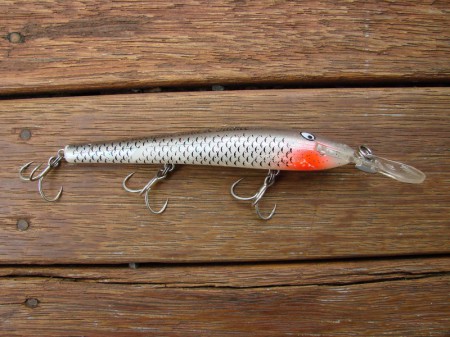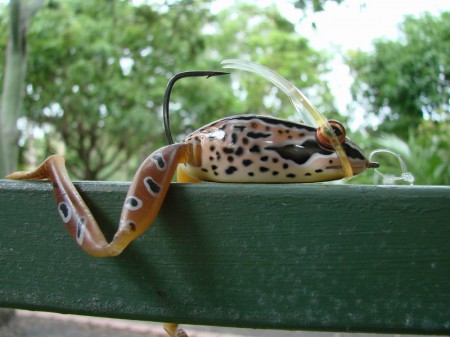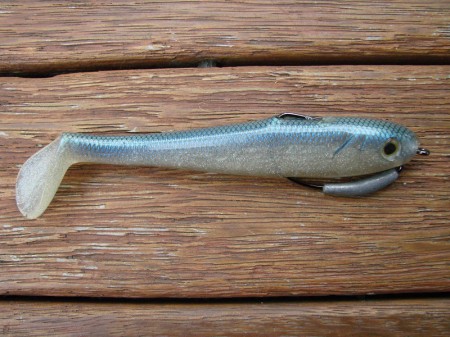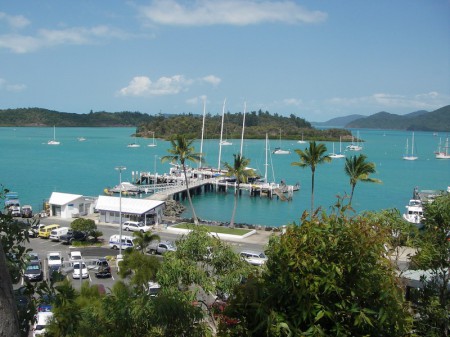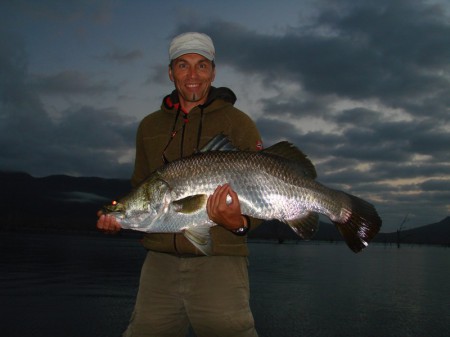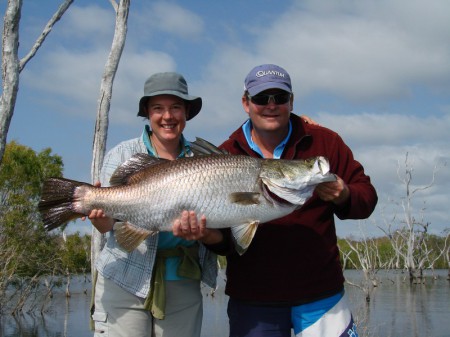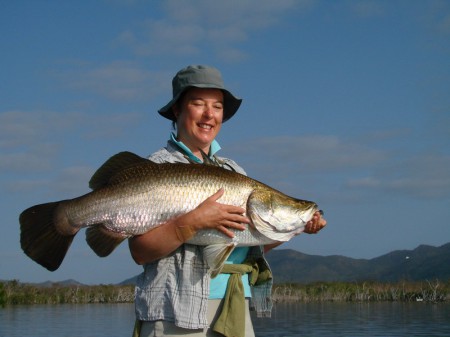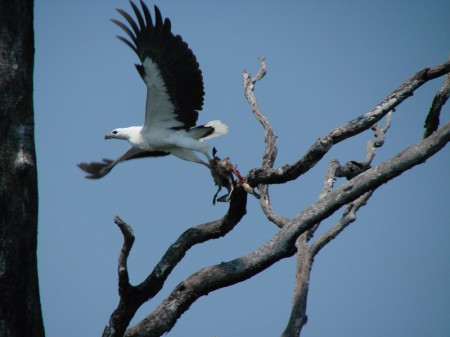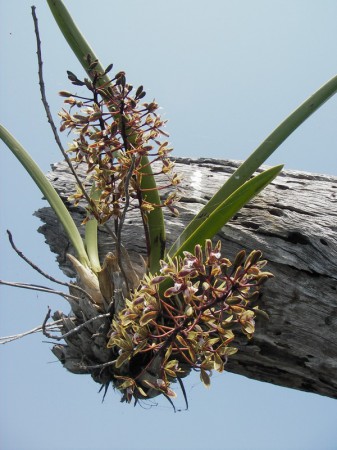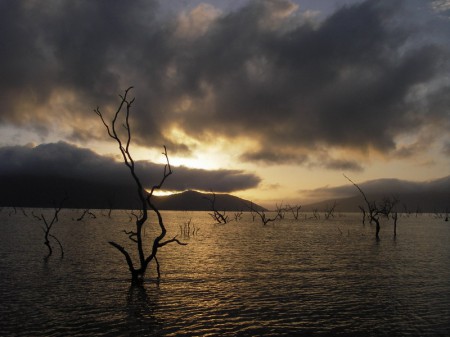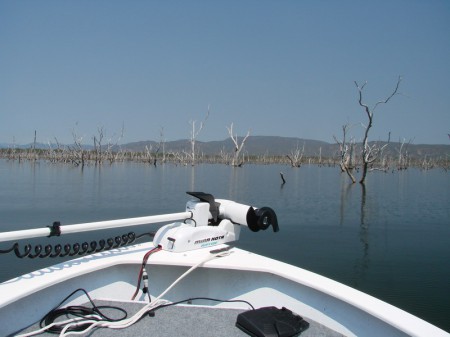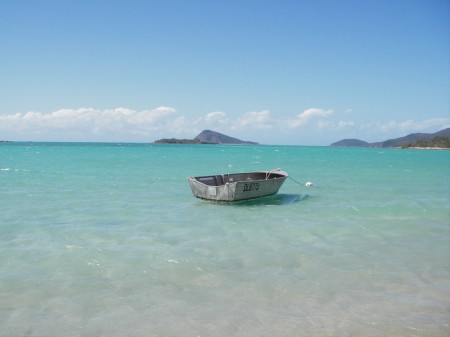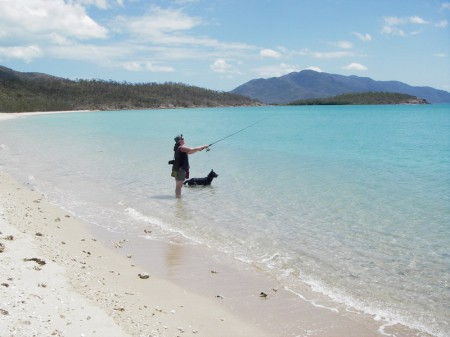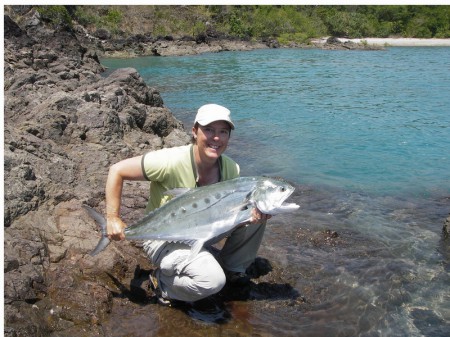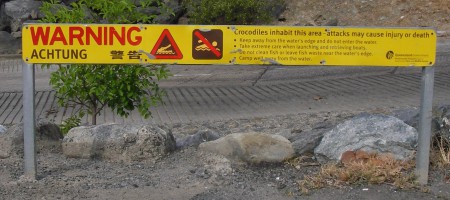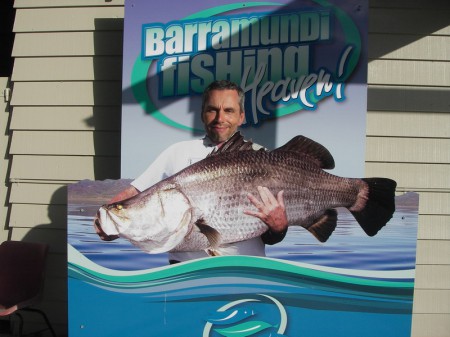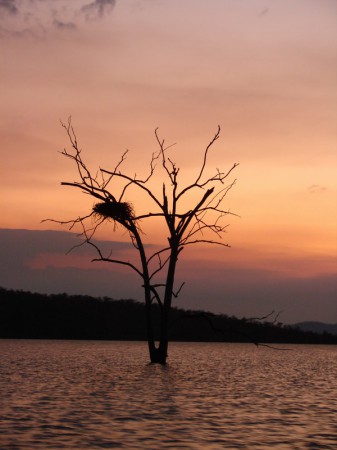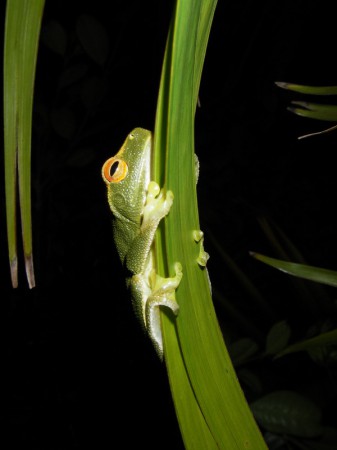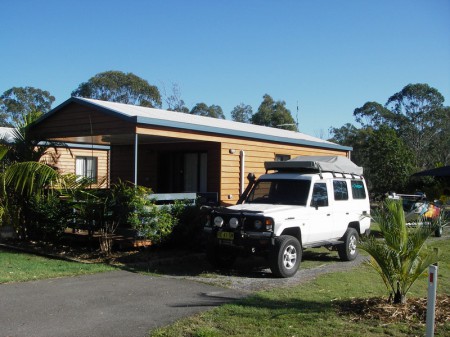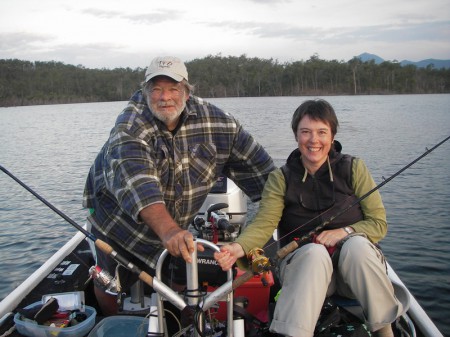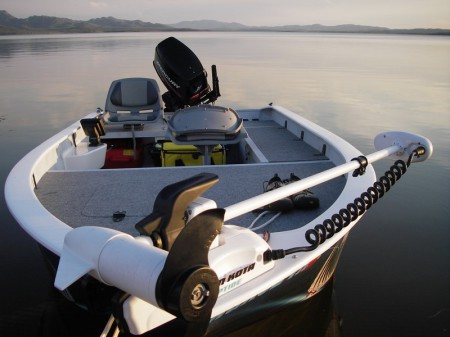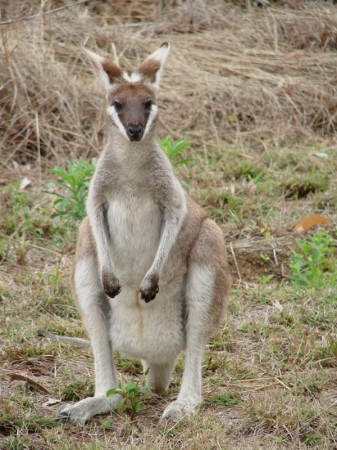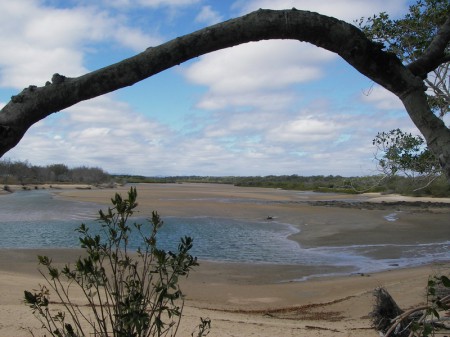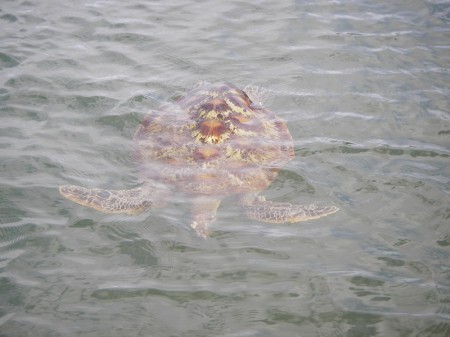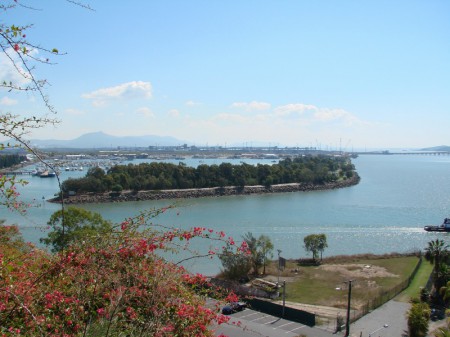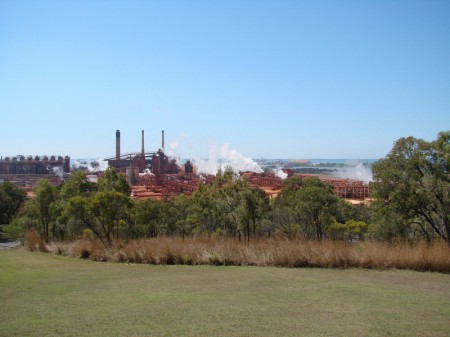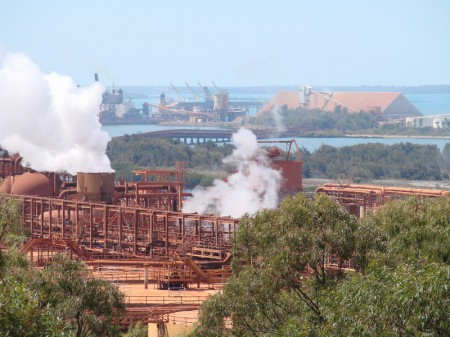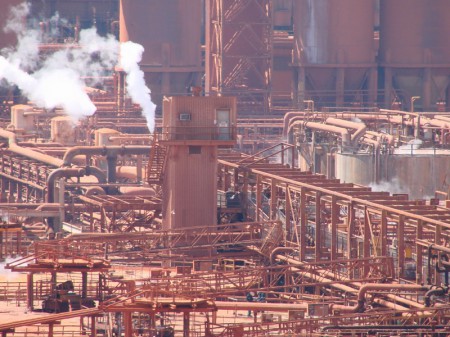When Ian invited us to join him on a trip to Koombooloomba dam, we could both hardly wait for the day to come. We had heard a lot about the great fishing for Sooty Grunter in Koombooloomba and the beautiful scenery and were looking forward to seeing it all by ourselves.
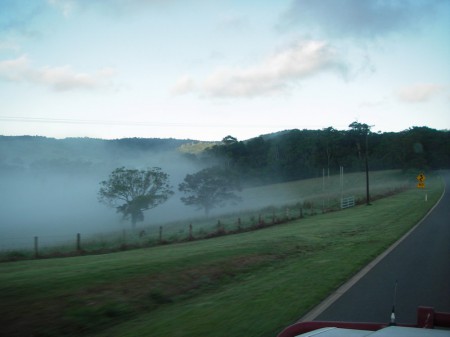 On the morning of our trip, the weather is picture perfect and when we arrive at Ian’s house at 06.30 am, he has already hooked up the boat and the three of us take off in his car. It’s about a 100km drive from Tinaroo to Koombooloomba dam and the trip alone is worth the effort. The road leads from the flat tableland into the hills and up the mountains. The hillsides are lush green after all the wet season rain and the cows are happy and fat. Many of the hilltops and deep gullies are covered in patches of dense rainforest. The road winds higher and higher and, at 1143m above sea level, we reach the highest point of any road in Queensland. The view into the surrounding mountains is breathtaking and time goes by very quickly. Ravenshoe is still asleep at 07.30am on a Sunday morning and we admire the old buildings along the main street. Shortly after leaving the township, the road turns from tar seal into gravel. We are now in the middle of the rainforest and all kinds of birds, butterflies and mammals come in sight. The single lane road is in quite good condition, but our driver still has to avoid some car and boat shattering pot holes. And then the lake appears between the trees.
On the morning of our trip, the weather is picture perfect and when we arrive at Ian’s house at 06.30 am, he has already hooked up the boat and the three of us take off in his car. It’s about a 100km drive from Tinaroo to Koombooloomba dam and the trip alone is worth the effort. The road leads from the flat tableland into the hills and up the mountains. The hillsides are lush green after all the wet season rain and the cows are happy and fat. Many of the hilltops and deep gullies are covered in patches of dense rainforest. The road winds higher and higher and, at 1143m above sea level, we reach the highest point of any road in Queensland. The view into the surrounding mountains is breathtaking and time goes by very quickly. Ravenshoe is still asleep at 07.30am on a Sunday morning and we admire the old buildings along the main street. Shortly after leaving the township, the road turns from tar seal into gravel. We are now in the middle of the rainforest and all kinds of birds, butterflies and mammals come in sight. The single lane road is in quite good condition, but our driver still has to avoid some car and boat shattering pot holes. And then the lake appears between the trees.
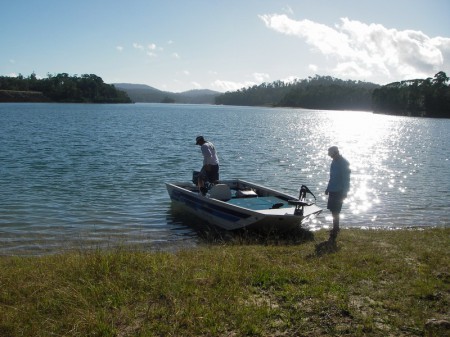 Launching the boat is a bit rough, but Ian has no trouble to get the rig in the water in no time. His wide, flat bottom boat is the perfect fishing machine, featuring huge front and rear casting platforms. We head out into the maze of dead, standing timber, lake arms and small islands; without a GPS or a detailed map, it’s easy to get lost on this 1550ha dam. The lake is situated about 760m above sea level and as a result of the recent heavy rains the water temperature has dropped slightly.
Launching the boat is a bit rough, but Ian has no trouble to get the rig in the water in no time. His wide, flat bottom boat is the perfect fishing machine, featuring huge front and rear casting platforms. We head out into the maze of dead, standing timber, lake arms and small islands; without a GPS or a detailed map, it’s easy to get lost on this 1550ha dam. The lake is situated about 760m above sea level and as a result of the recent heavy rains the water temperature has dropped slightly.
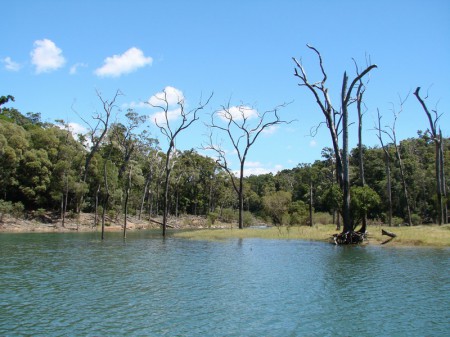
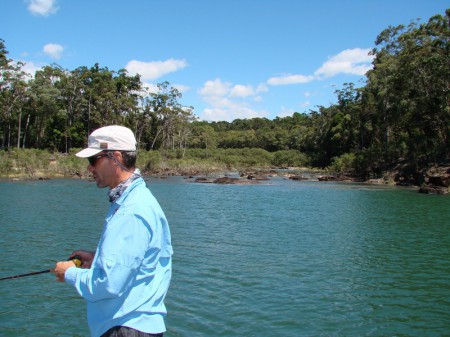 The Sooty Grunter won’t mind, but the also present Barramundi might not be in the mood. We concentrate our efforts on the shallows and weed beds combined with timber and on rocky outcrops. The first hour is very slow, but just before ten o’clock (Jack knows all about it!), the fishing is firing. Each of us catches the first Sooty of the day and many more are following. Again and again Ian points out a sexy looking tree or submerged timber and the first cast close to the structure yields a good fish.
The Sooty Grunter won’t mind, but the also present Barramundi might not be in the mood. We concentrate our efforts on the shallows and weed beds combined with timber and on rocky outcrops. The first hour is very slow, but just before ten o’clock (Jack knows all about it!), the fishing is firing. Each of us catches the first Sooty of the day and many more are following. Again and again Ian points out a sexy looking tree or submerged timber and the first cast close to the structure yields a good fish. 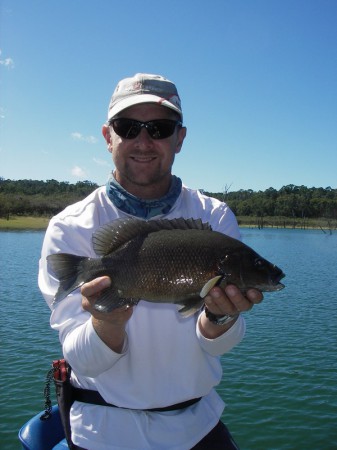 We get many double hook ups and the fish give a really good account of themselves. Vibes and soft plastics, worked slowly, all catch their share. Ian also fishes with the fly, but whenever he touches his fly rod, the otherwise calm weather turns windy and makes casting a real challenge.
We get many double hook ups and the fish give a really good account of themselves. Vibes and soft plastics, worked slowly, all catch their share. Ian also fishes with the fly, but whenever he touches his fly rod, the otherwise calm weather turns windy and makes casting a real challenge.
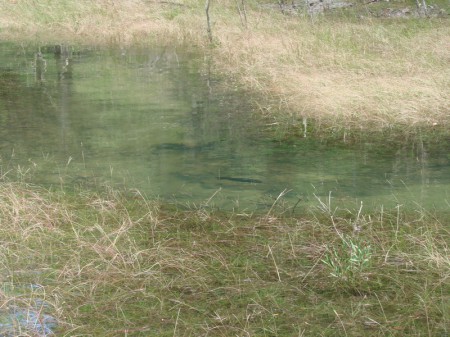 The clear, nutrient poor water of the lake makes sight fishing possible and we explore the shallows and some of the countless flooded gullies. At some stage, we are able to spot several good sized Sootys in a small, flooded creek and Ian manages to catch three of them. Every now and then we have to give the fish a rest, sit back and admire the scenery. The three of us together have already landed more than 20 fish and lost many more, when suddenly a big Barra follows a hooked Sooty right up to the boat. Everyone is jumping around and trying to tie on a decent Barra lure as quick as possible. In the meantime, Béatrice has caught yet another Sooty and the Barra is getting serious now. The big fish attacks Béatrice’s quarry and is just about to swallow it, when the smaller fish gets off and the Barra grabs the little Squidgy soft plastic instead. And then all hell breaks loose!
The clear, nutrient poor water of the lake makes sight fishing possible and we explore the shallows and some of the countless flooded gullies. At some stage, we are able to spot several good sized Sootys in a small, flooded creek and Ian manages to catch three of them. Every now and then we have to give the fish a rest, sit back and admire the scenery. The three of us together have already landed more than 20 fish and lost many more, when suddenly a big Barra follows a hooked Sooty right up to the boat. Everyone is jumping around and trying to tie on a decent Barra lure as quick as possible. In the meantime, Béatrice has caught yet another Sooty and the Barra is getting serious now. The big fish attacks Béatrice’s quarry and is just about to swallow it, when the smaller fish gets off and the Barra grabs the little Squidgy soft plastic instead. And then all hell breaks loose! 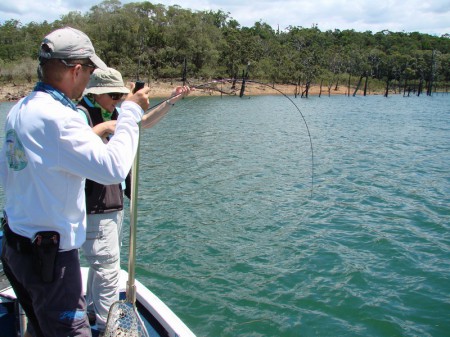 With a tiny 1-3kg rod, 8lbs mainline and 12lbs leader, Béatrice can only hang on for dear life and hope for the best. Thank god, it all happens in an open part of the lake and Ian skillfully follows the fish with the boat. At some stage, the line gets caught in floating timber and everyone expects the worst to happen. Great boat work saves the day yet again and after what seems to be a long tussle the big fish gives in. The landing net is too small and only the head of the Barra fits in. Seconds later the fish is in the boat though and it is even bigger than expected. The brag mat shows an impressive 104cm and the female is fat and in prime condition. Well done, Béatrice! She has long become a Squidgy addict and expert and has just caught her personal best Barra so far.
With a tiny 1-3kg rod, 8lbs mainline and 12lbs leader, Béatrice can only hang on for dear life and hope for the best. Thank god, it all happens in an open part of the lake and Ian skillfully follows the fish with the boat. At some stage, the line gets caught in floating timber and everyone expects the worst to happen. Great boat work saves the day yet again and after what seems to be a long tussle the big fish gives in. The landing net is too small and only the head of the Barra fits in. Seconds later the fish is in the boat though and it is even bigger than expected. The brag mat shows an impressive 104cm and the female is fat and in prime condition. Well done, Béatrice! She has long become a Squidgy addict and expert and has just caught her personal best Barra so far.
After a bit of a rest to gather ourselves after all the excitement, we continue fishing and catch several more Sootys. At around 3 o’clock pm we call it a day and head back to the ramp. With the boat securely tied down onto the trailer, we tackle the road back to Ravenshoe. The main topic of our conversation on the way home is the awesome fishing and the great location and we arrive back at Ian’s place soon. Thank you for another day we will never forget, Ian! Koombooloomba is an absolute gem!